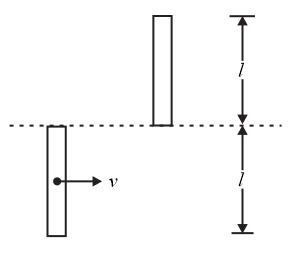Q.
A bar of mass $m$ and length $l$ is in pure translational motion with its centre of mass moving with a velocity $v$ . It collides and sticks to another identical bar at rest as shown in the figure. Assuming that after the collision the system of the two bars becomes one composite bar of length $2l$ , then the angular velocity of the composite bar will be

NTA AbhyasNTA Abhyas 2020System of Particles and Rotational Motion
Solution: